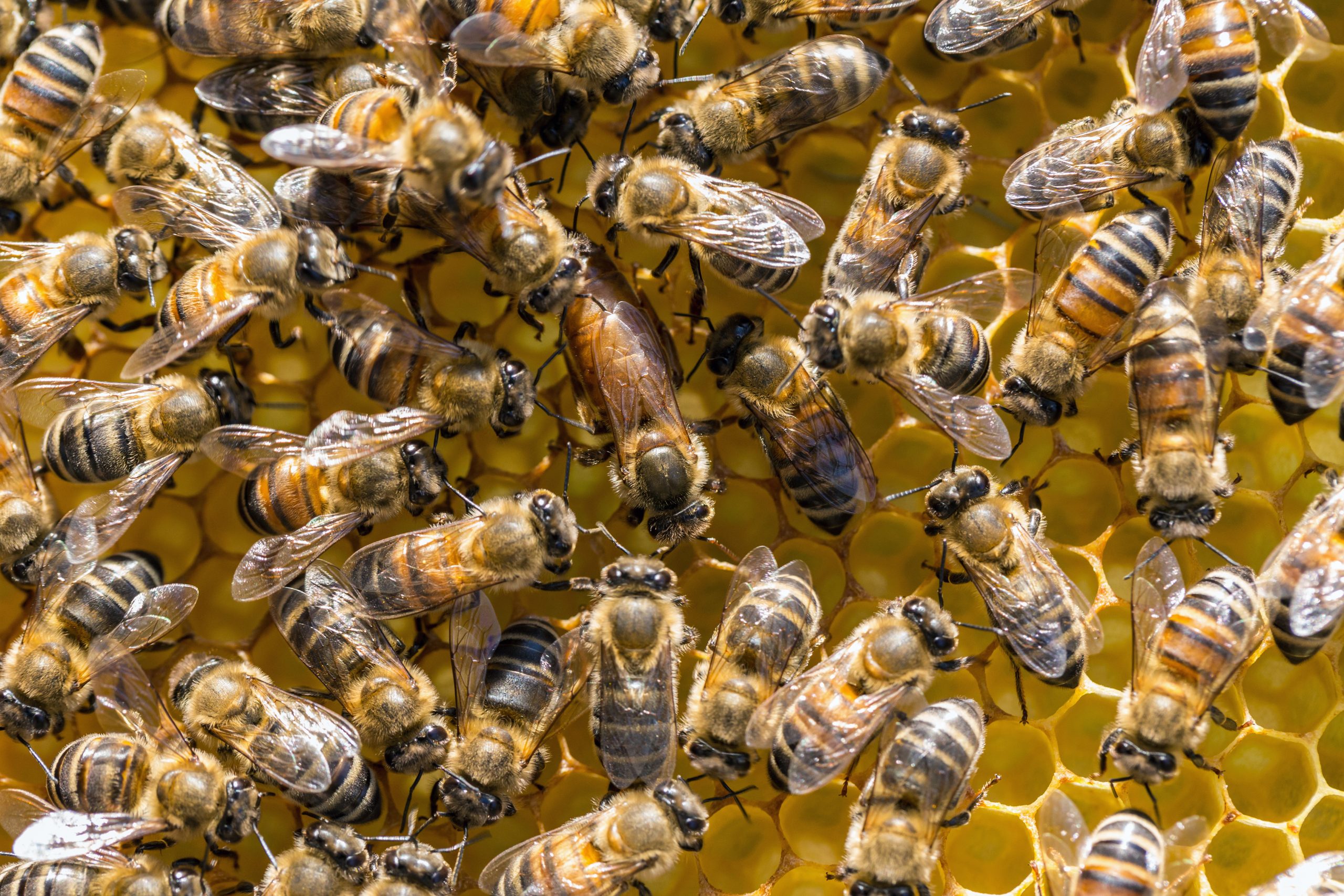Honeybees Inside the Hive
July 15, 2016
Bee Colony Collapse, Honey, Honey Bees
It’s one thing to know about honeybees’ role in our lives—pollinating flowers and the plants that produce our food—as well as their populations declining, but it’s another thing to understand how a honeybee colony’s hive actually works because in its own way, a hive is an organism of sorts, with thousands of individual parts working together like an engine. Each bee has its own job within the hive, but the overall goal is the same—keep the hive alive by keeping it healthy, making honey, and reproducing more honeybees.
While a “domesticated” honeybee box may look outwardly serene, with a few bees at the entrance or a few flying lazily around, each of the likely 90,000 bees inside are hitting the pavement and accomplishing their tasks, with beekeeper Janet Williams saying those bees were born knowing exactly what their job was to ensure the hive’s survival. “Everything is about the queen,” Williams said. “Worker bees, which are all female, know their job is to keep the queen well fed and protected and make honey.” This queen, who is fed royal jelly as an egg, a larva, and until her death, replaces the previous, now-dead queen by hatching and taking her “maiden flight” to mate with the male drones—this happens once in her lifetime (four years), and upon her return, she carries millions of fertilized eggs that she lays at a rate of 1,500 per day.
With the queen at the top, a hive is a matriarchal society in which drones are used for the one purpose of fertilizing eggs, after which they are forced from the hive to allow room for more generations of bees. The worker bees take on a variety of roles within the hive’s order, according to Williams, such as “nursey workers” who “take care of the larvae and other newly hatched bees.” Other bees create hexagon cells where the queen lays eggs while also cleaning the cells. Other workers feed, groom, and protect the queen and ventilate the hive to keep it at 90 degrees F. There are also guards who kill intruders before or after they enter the hive.
The rest of the workers spend their days pollinating flowers and collecting nectar to feed the other workers and make honey, visiting up to 2,000 flowers per day during 50-100 trips for 12 hours every day, with each bee making about 1/12 a teaspoon of honey in their lives, which are about five to six weeks long. And these trips aren’t random—scout bees find the best flowers and nectar and bring it back in samples “like saddle bags.” If the nectar passes inspection, the scout uses pheromones and a dance to give directions. “It’s called the 'waggle dance,' and it takes your breath away to watch it,” said Williams. “It looks like they’re doing a left, right, wiggle, wiggle, but each movement is showing the other bees what direction and how far away the flowers are.”
These activities go on every day throughout summer, though in winter the hive shifts gears. The queen lays few eggs, if any, and worker bees keep her fed on summer stores and warm by circling her and rotating themselves in and out of the cold. Many of the bees don’t survive winter, but those who do wait for the wildflowers to bloom, signaling another season of hard work and eusocial life.


.jpg)



